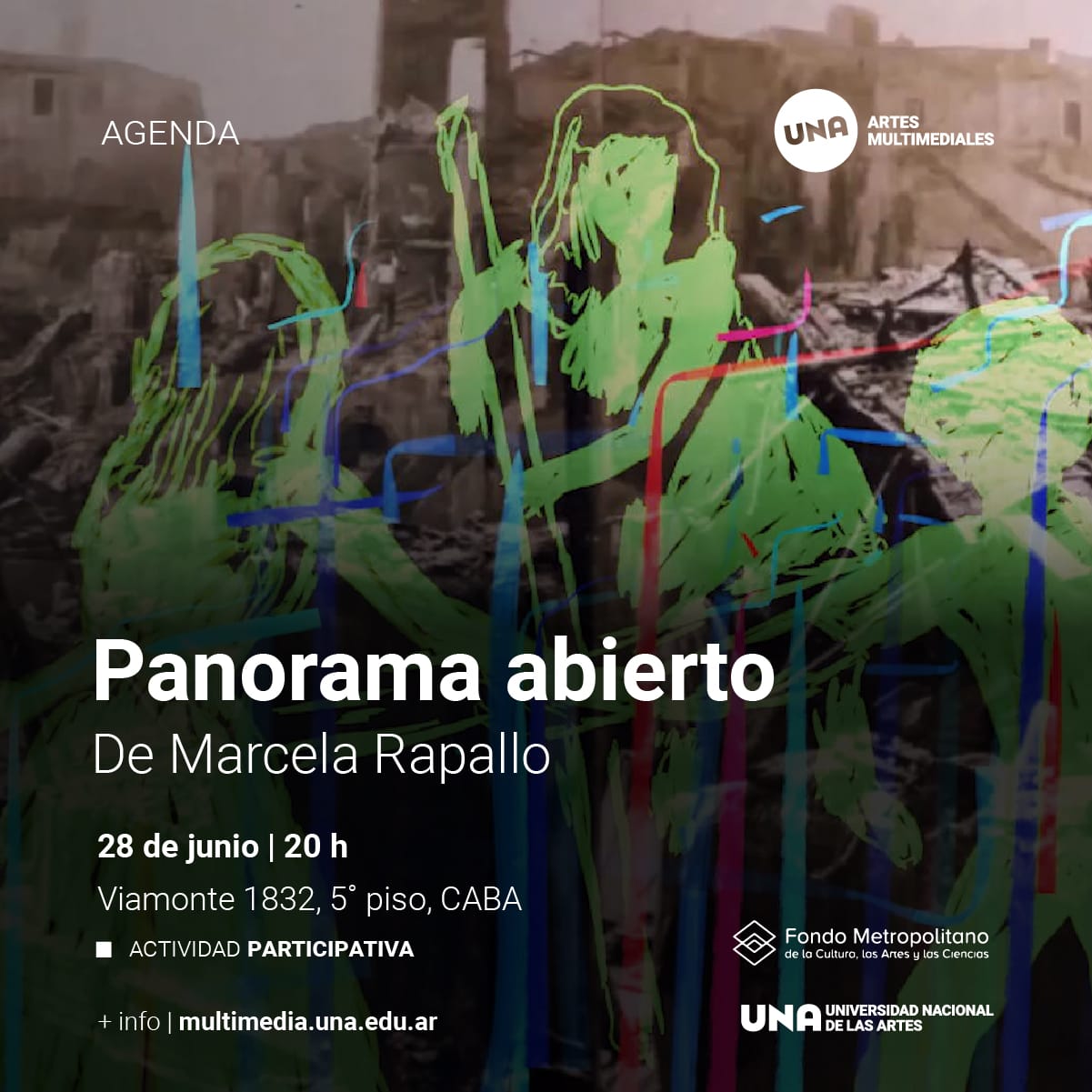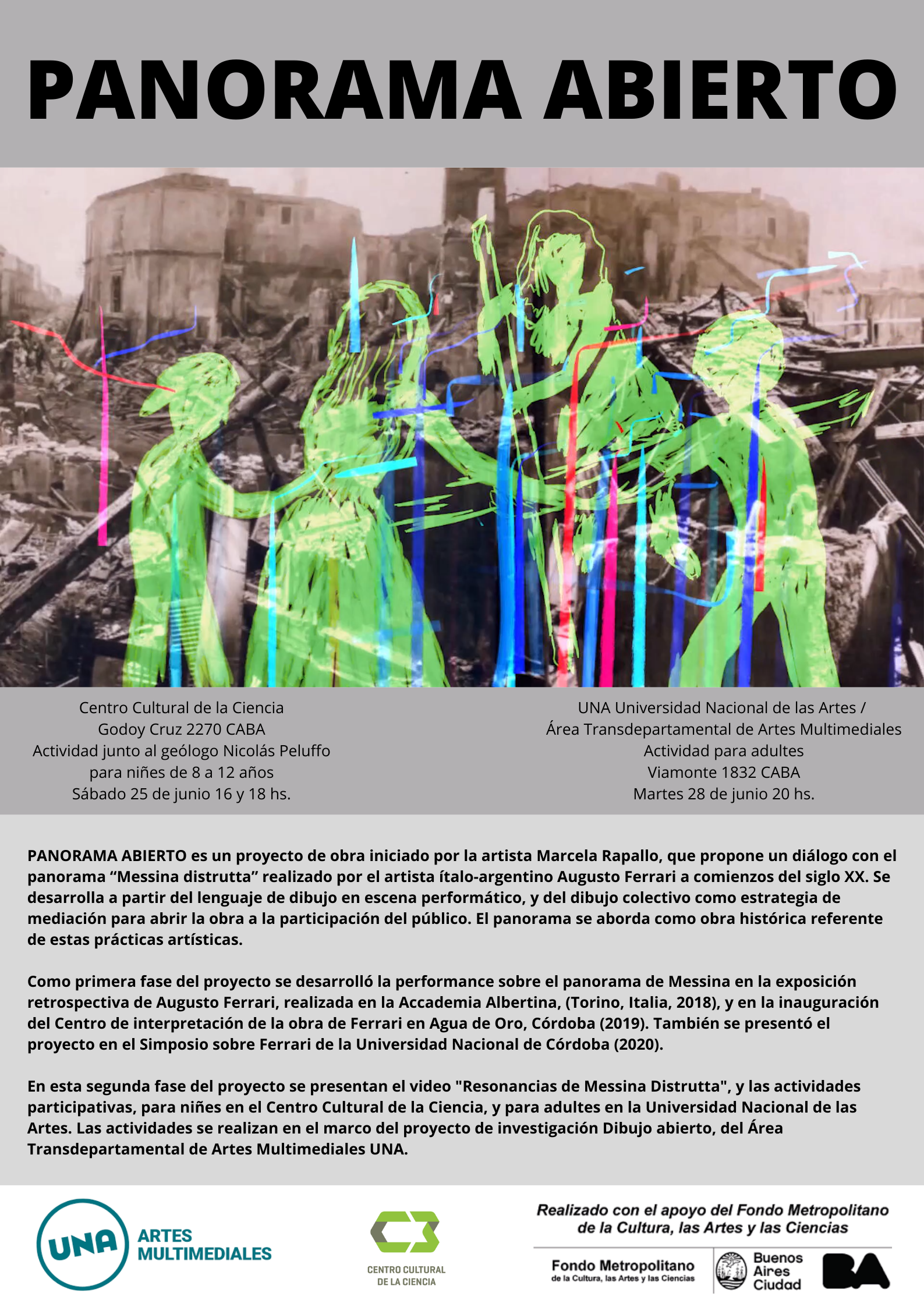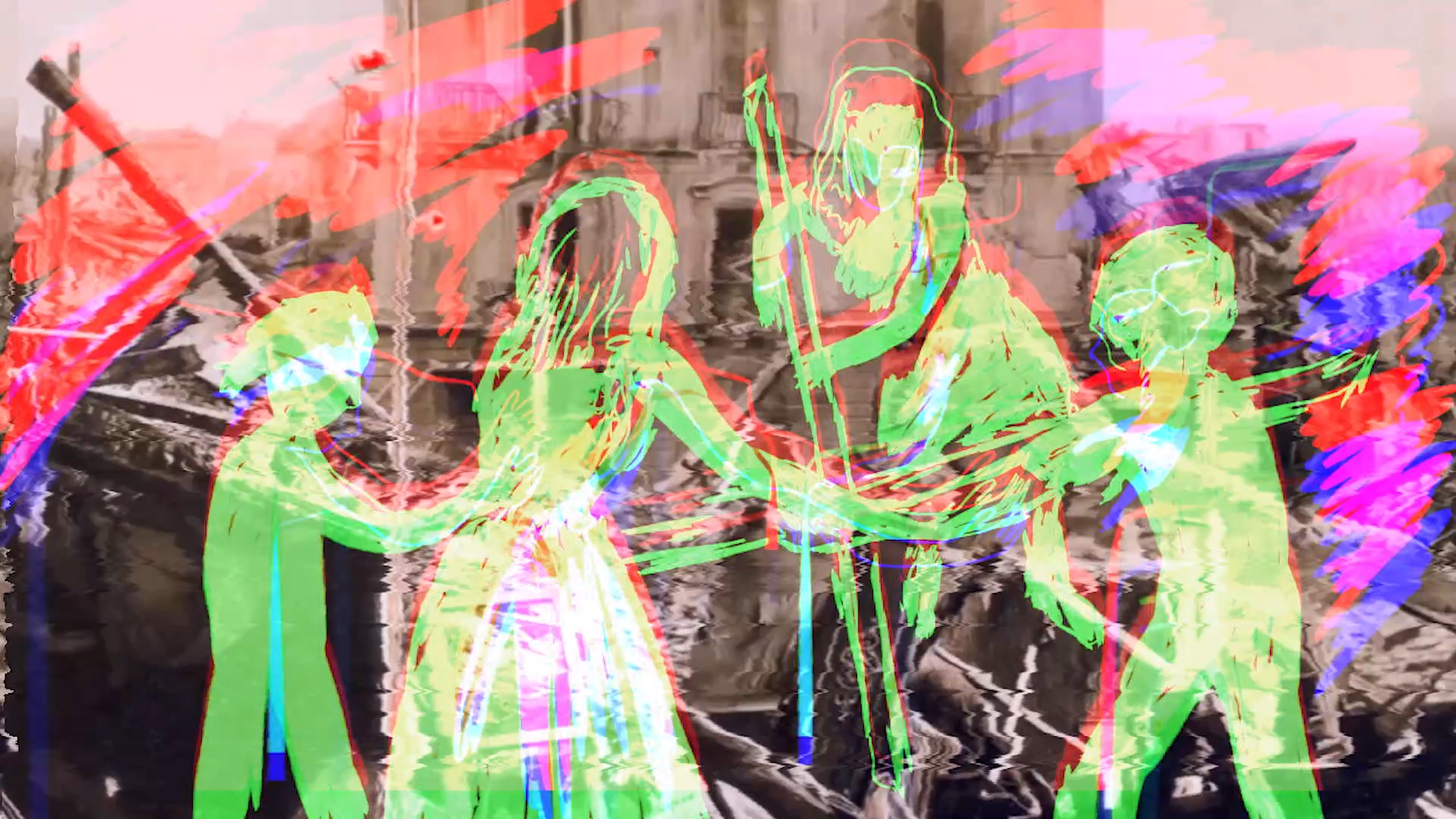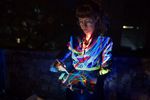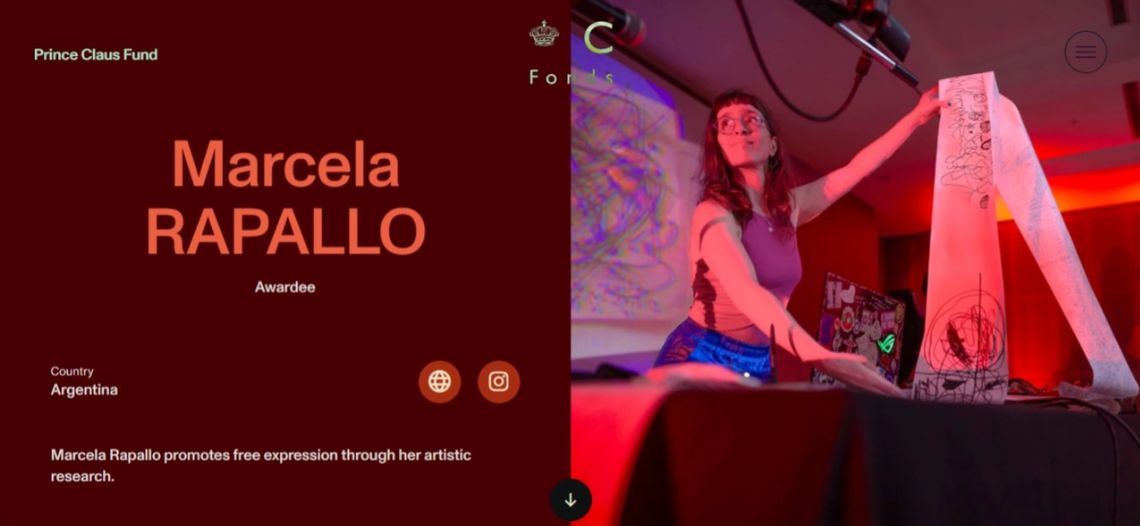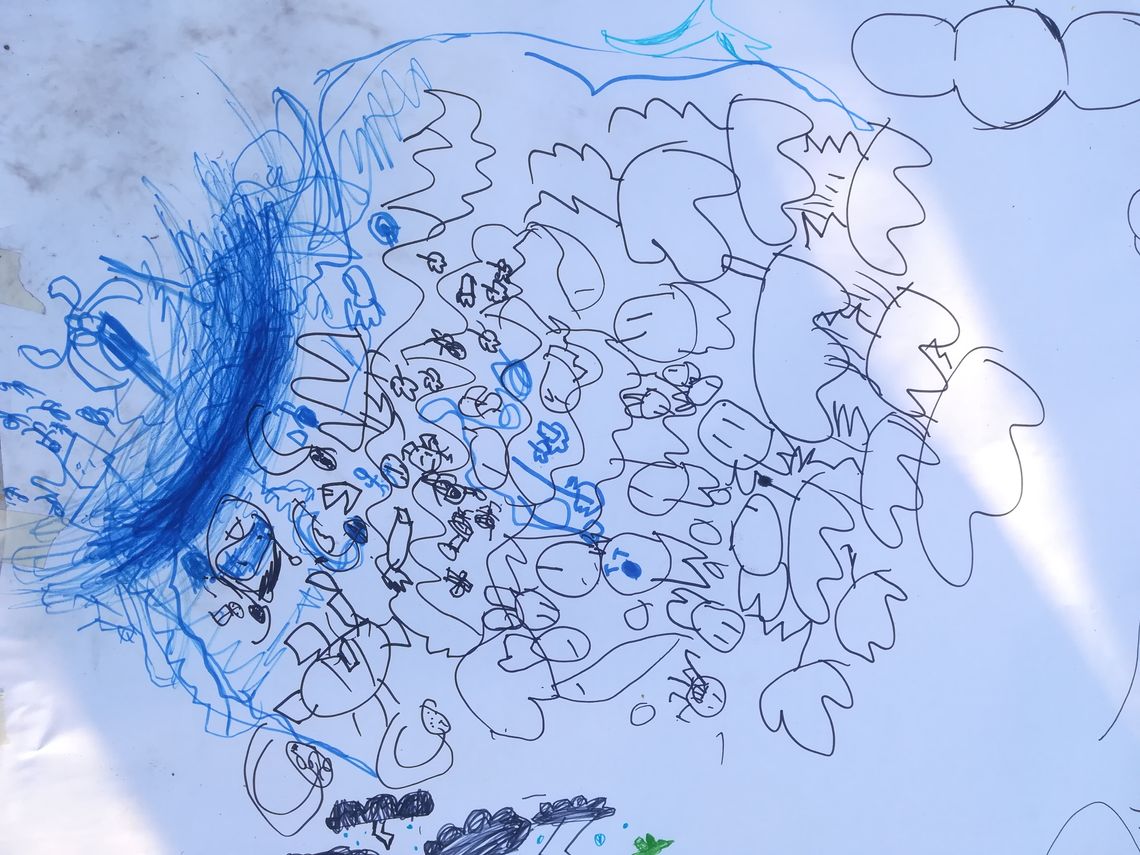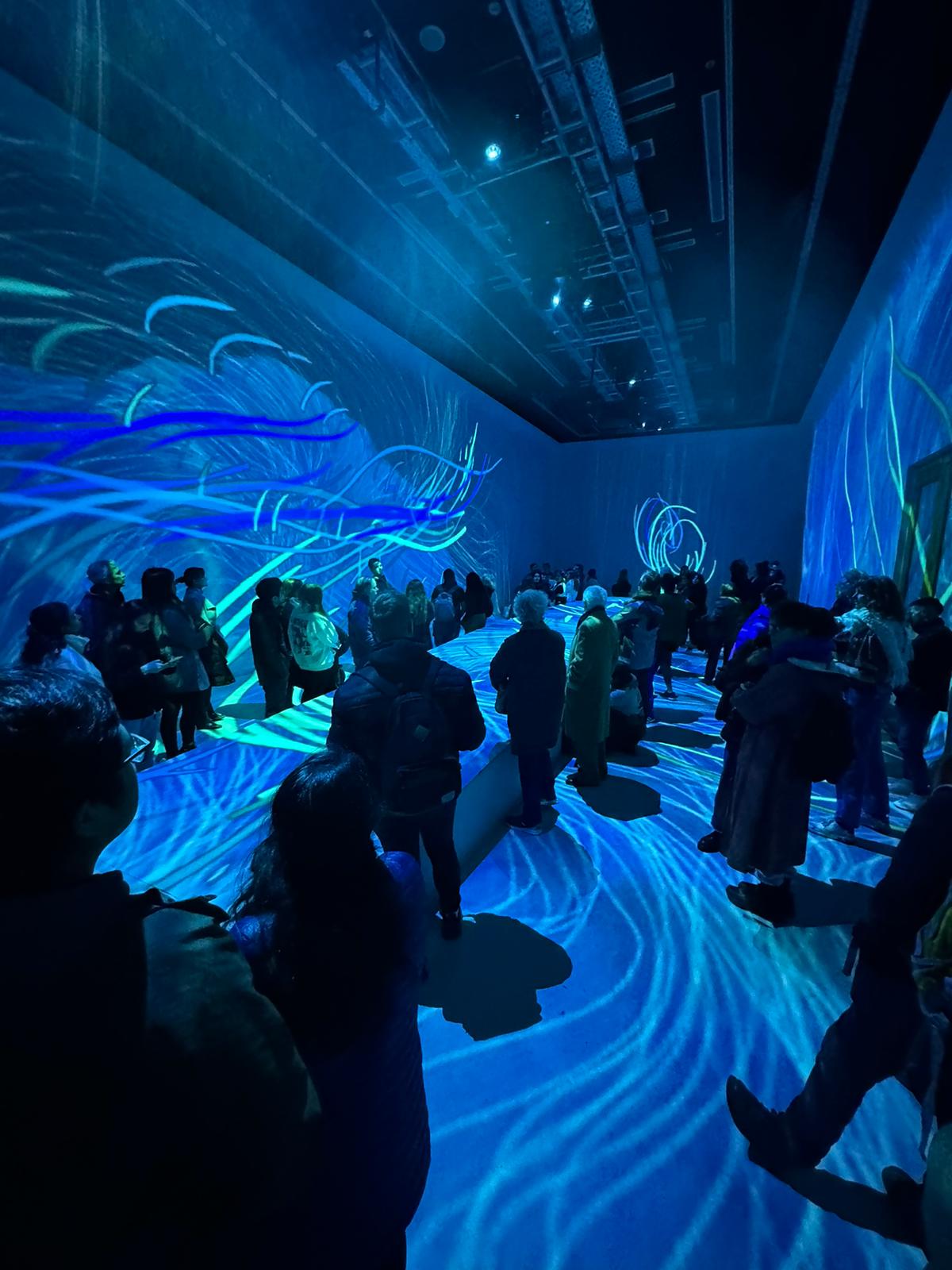Panorama abierto (Open Panorama) is a work project that proposes a dialogue with the panorama "Messina distrutta" made by the Italian-Argentine artist Augusto Ferrari in the early twentieth century. It is developed from the language of performative stage live drawing and collective drawing as a mediation strategy to open the work to public participation. The panorama is approached as a historical reference work of these artistic practices.
The panoramas were large paintings (often more than 100 meters long by 10 meters high), which were hung in a circular form in buildings built specifically for their assembly and visualization, generating an immersive 360 degree space. They were set by lighting and sometimes had live music. They were a popular meeting place for the arts between the late nineteenth and early twentieth centuries, until the advent of cinema.
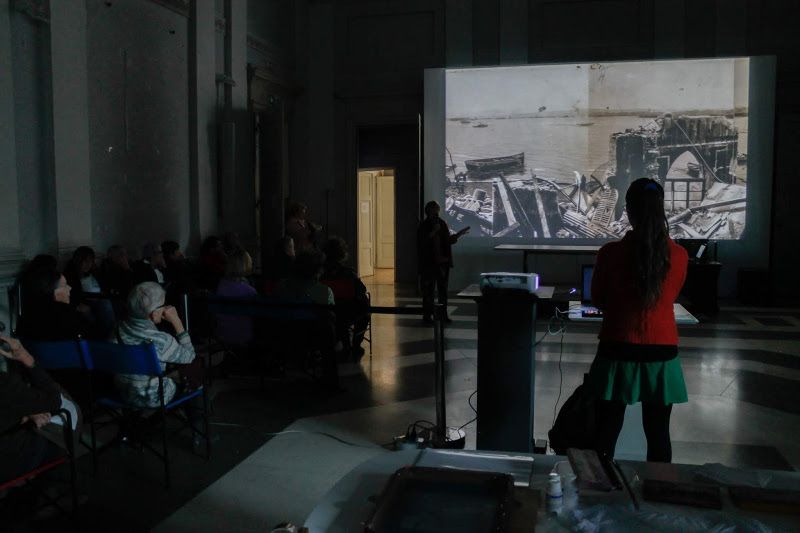
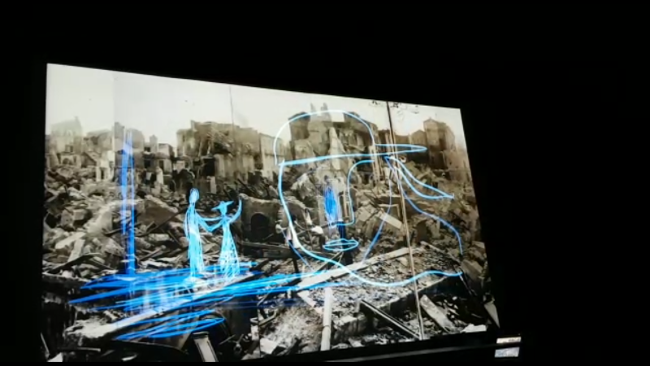
As the first phase of the project I developed the performance on the panorama of Messina premiered at the retrospective exhibition of Augusto Ferrari, held at the Accademia Albertina, (Torino, Italy, 2018). In the second phase of the project I realized the video art "Resonancias de Messina distrutta", reformulating the live drawing script of the performance, and incorporating the story of Susana Ferrari, Augusto's daughter.
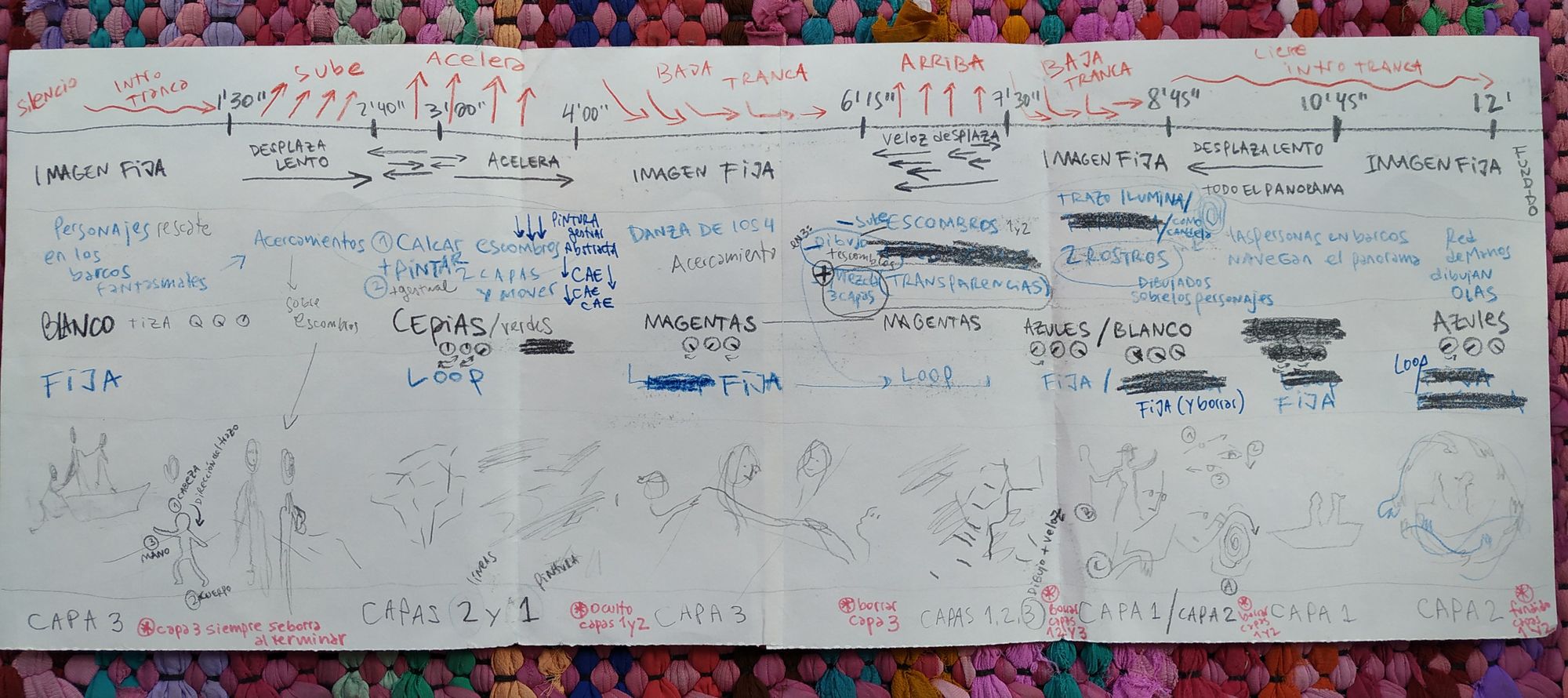
The panoramas were shows accessible to a wide public, which is why they were criticized by the elitist media of the time, who considered that painting was devalued by putting it in the place of a show. This characteristic is related to the current concept of cultural democracy, with mediation practices and participatory works. It is an axis of the project to resignify this characteristic as part of the contemporary gaze.

The panoramas were also a visual chronicle of an era, they were means of communication. The Messina panorama has several particular characteristics in relation to most panoramas. His images may refer to the world wars, but it is an earlier event. It doesn't portray battles or wars (as was common), but portrays the moment after a great natural catastrophe. It focuses on the rescue and help to the survivors, it narrates how people from different countries collaborate with each other in an extreme situation.
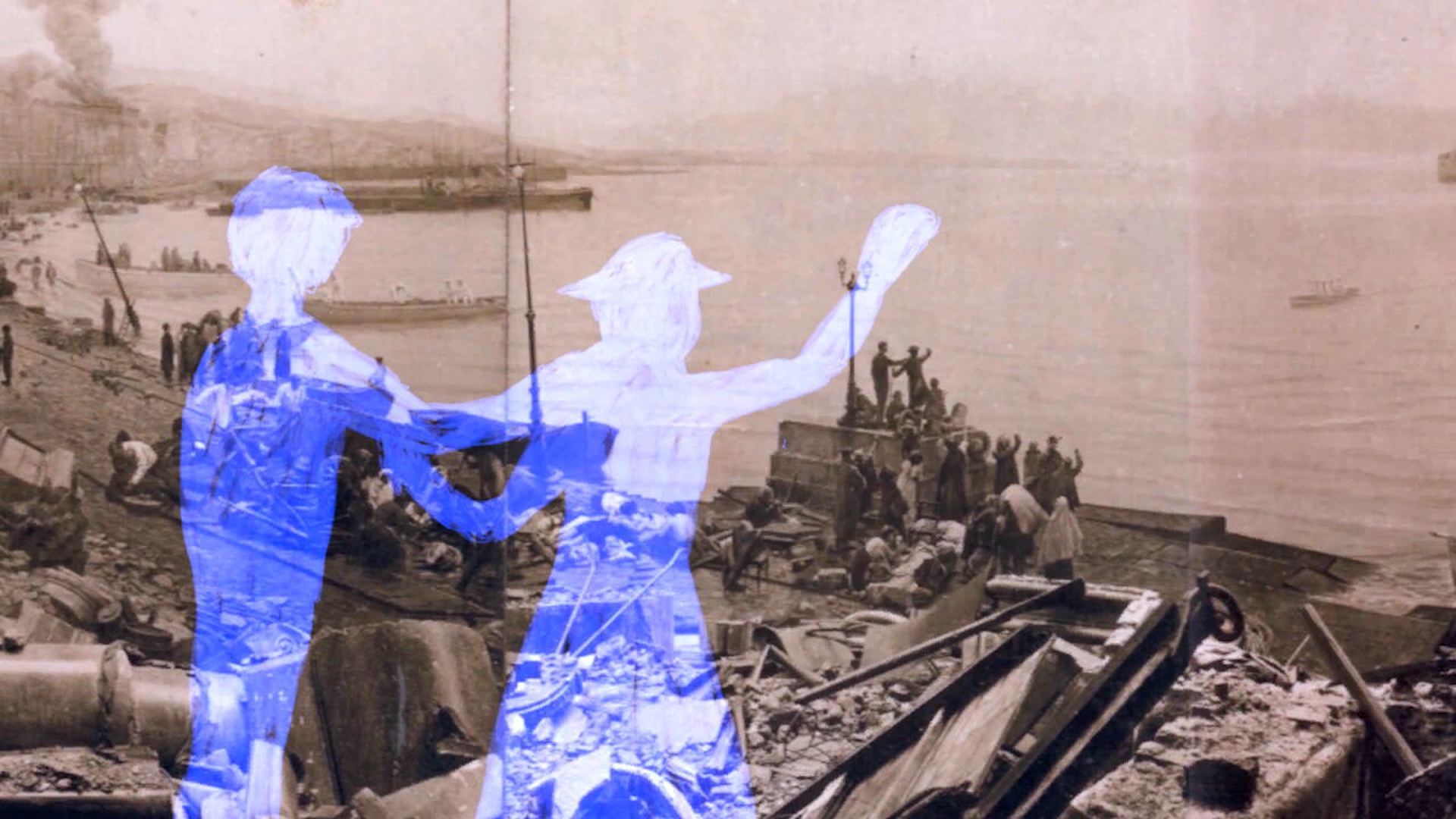
This fact motivated a central idea of the project: the choice of where to place the gaze to dialogue with a work, and the validity and urgency of this problem in the contemporary world. The proposal is to make this dialogue with the panoramas on the conscience of choosing where we put our gaze and action. To expose solidarity as the only way in the face of a critical situation that exceeds the human being and at the same time exposes its path to the brink of collapse, based on war and extreme social inequality.
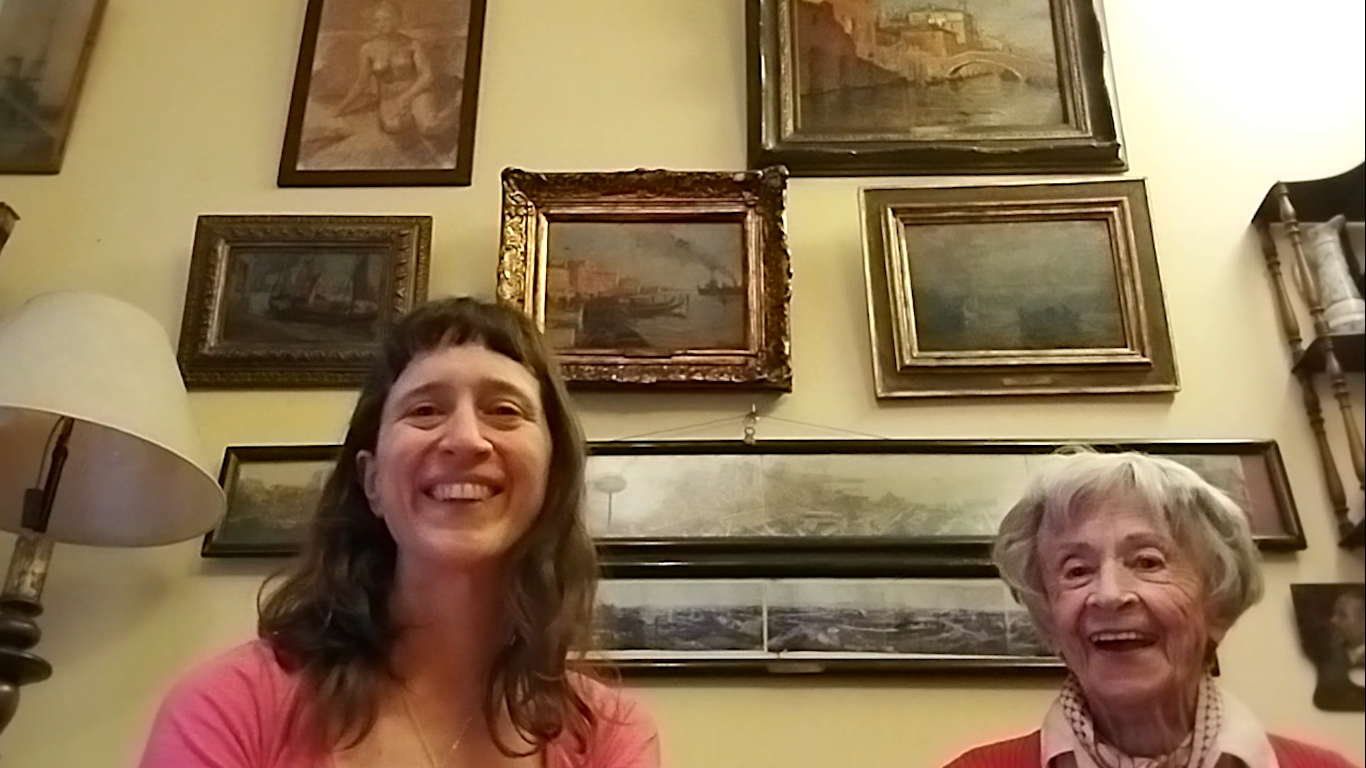
In the performances of the first phase of the project and in the video art of the second phase, I used Andiamo. In the second phase of the project I began to develop participatory activities with Trazos Club, in which I share the creative process carried out for the intervention of the panorama in the performances. This process is recreated within a strategy of collective drawing, through which the participants are invited to appropriate and intervene the panorama.
The participatory activities resignify the previous experience and are an input to think about the ways of interaction that will be part of the final phase of the project. They will be the basis for thinking about the possibilities of the interactive technological device to be developed, and the strategies to be incorporated in guided proposals for activating the panorama.
The project takes the role of the artist from a broad perspective, as a maker of images, interpreter, coordinator of educational and mediation activities, and as a link between artists, the public and historical references.
Andiamo was used to intervene the images of the old panorama by means of freehand animated drawings. Trazos Club served to open the working method in a collective action inviting participation. In addition, the projection of the last phase of the project includes a technological development based on Trazos Club. It will consist of the realization of a participatory multimedia work. The digitized image of the original panorama will be exhibited in the original circular format and in a large scale also close to the original size. This installation will feature activations based on the languages of real time animated drawing and interactive video mapping. The work will be a recreation of the old panorama, as well as a device on which artists from different disciplines and the participating public can interact.
ize the Open Panorama project in its final phase is to create an open work while finally exhibiting the original work in Argentina, which was not possible due to the economic crisis at the beginning of the century. This is another motivation of the project in relation with the idea of open work, because to realize one's own project, which at the same time is to realize the project of an artist whose practice is a historical reference of our practices, would be a gratification and a victory over the crises that permanently hinder artistic projects and the development of our cultures.
